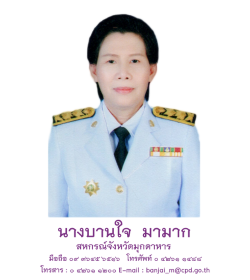×
ยินดีต้อนรับสู่ ฟอรัม Kunena!
อยากรู้จังเลยว่าคุณชอบอะไร รู้จักกับที่นี่ได้อย่างไร และสาเหตุจูงใจอะไรจึงลงทะเบียนเป็นสมาชิกกับทางเรา ช่วยแจ้งให้เราได้ทราบหน่อยได้ไหม
ยินดีต้อนรับสมาชิกใหม่ทุกท่าน และหวังว่าทางเราจะได้รับใช้คุณเยี่ยงนี้ตลอดไป
อยากรู้จังเลยว่าคุณชอบอะไร รู้จักกับที่นี่ได้อย่างไร และสาเหตุจูงใจอะไรจึงลงทะเบียนเป็นสมาชิกกับทางเรา ช่วยแจ้งให้เราได้ทราบหน่อยได้ไหม
ยินดีต้อนรับสมาชิกใหม่ทุกท่าน และหวังว่าทางเราจะได้รับใช้คุณเยี่ยงนี้ตลอดไป
https://kraken20at.net
- Devindup
- Topic Author
- Visitor
-

3 weeks 2 days ago #2650350
by Devindup
Replied by Devindup on topic kraken войти
This teen became the youngest person to summit the world’s highest peaks. Now he wants others to follow in his footsteps
<a href=https://kra16f.cc>kraken официальный сайт
Nima Rinji Sherpa’s ears are still tinged black from wind chill, an occupational hazard of climbing to heights where humans struggle to breathe, and where the weather can turn deadly in an instant.
This month, Nima became the youngest person to summit all 14 of the world’s highest peaks, but the 18-year-old Nepalese mountaineer is already getting ready for his next big feat.
kra16f.cc
kra16 cc
Speaking to CNN via video call from the Nepali capital Kathmandu last week, Nima said he’s taking a couple weeks’ rest before preparing to climb the world’s eighth-highest mountain, Manaslu, with Italian mountaineer Simone Moro – in winter, alpine-style.
“That means we’re climbing an 8,000-meter mountain in winter… There’s no fixed ropes for us, there’s no (supplemental) oxygen for us, there is no support for us. So, it’s like pure human endurance,” Nima said. “It has never been done in the history of mountaineering.”
After that, “I’ll take some rest,” Nima laughed.
On October 9, Nima reached the top of the 8,027-meter (26,335-foot) Shishapangma along with his partner Pasang Nurbu Sherpa. For Nima, it was the final of the “eight-thousanders,” the 14 peaks recognized by the International Climbing and Mountaineering Federation as standing more than 8,000 meters above sea level.
Describing the moment of summiting the final peak as “pure joy,” Nima said his motivation comes from his family, many of whom are renowned mountaineers.
His father, Tashi Lakpa Sherpa, has climbed Everest nine times, and at age 19 became the youngest person to summit without bottled oxygen. His uncle Mingma Sherpa became the first South Asian climber to summit the 14 peaks in 2011.
“My uncles and my father, they are way more successful than I would ever be because they came from a very small village. To even dream about being this successful, for them it was really hard,” Nima said. “I have the privilege that they didn’t have.”
<a href=https://kra16f.cc>kraken официальный сайт
Nima Rinji Sherpa’s ears are still tinged black from wind chill, an occupational hazard of climbing to heights where humans struggle to breathe, and where the weather can turn deadly in an instant.
This month, Nima became the youngest person to summit all 14 of the world’s highest peaks, but the 18-year-old Nepalese mountaineer is already getting ready for his next big feat.
kra16f.cc
kra16 cc
Speaking to CNN via video call from the Nepali capital Kathmandu last week, Nima said he’s taking a couple weeks’ rest before preparing to climb the world’s eighth-highest mountain, Manaslu, with Italian mountaineer Simone Moro – in winter, alpine-style.
“That means we’re climbing an 8,000-meter mountain in winter… There’s no fixed ropes for us, there’s no (supplemental) oxygen for us, there is no support for us. So, it’s like pure human endurance,” Nima said. “It has never been done in the history of mountaineering.”
After that, “I’ll take some rest,” Nima laughed.
On October 9, Nima reached the top of the 8,027-meter (26,335-foot) Shishapangma along with his partner Pasang Nurbu Sherpa. For Nima, it was the final of the “eight-thousanders,” the 14 peaks recognized by the International Climbing and Mountaineering Federation as standing more than 8,000 meters above sea level.
Describing the moment of summiting the final peak as “pure joy,” Nima said his motivation comes from his family, many of whom are renowned mountaineers.
His father, Tashi Lakpa Sherpa, has climbed Everest nine times, and at age 19 became the youngest person to summit without bottled oxygen. His uncle Mingma Sherpa became the first South Asian climber to summit the 14 peaks in 2011.
“My uncles and my father, they are way more successful than I would ever be because they came from a very small village. To even dream about being this successful, for them it was really hard,” Nima said. “I have the privilege that they didn’t have.”
Reply to Devindup
- GeorgeLayer
- Topic Author
- Visitor
-

3 weeks 2 days ago #2650364
by GeorgeLayer
Replied by GeorgeLayer on topic kra18.cc
Tiny house with elaborate – and erotic – frescoes unearthed at Pompeii
<a href=https://kra16f.cc>kraken2trfqodidvlh4aa337cpzfrhdlfldhve5nf7njhumwr7instad onion
Archaeologists have uncovered a tiny house in Pompeii that is filled with elaborate – and sometimes erotic – frescoes, further revealing the ornate way in which Romans decorated their homes.
Situated in the central district of the ancient city, the house is smaller than normal and unusually lacks the open central courtyard – known as an atrium – that is typical of Roman architecture, the Archaeological Park of Pompeii, which oversees the site, said in a statement Thursday.
kra16f.cc
kraken3yvbvzmhytnrnuhsy772i6dfobofu652e27f5hx6y5cpj7rgyd onion
This change could have occurred due to shifting trends in Roman - and particularly Pompeian - society, during the first century AD, archaeologists said.
Pompeii was destroyed by the eruption of Mount Vesuvius in AD 79 when its buildings and thousands of inhabitants were buried beneath layers of ash and pumice. This coating perfectly preserved the city for millennia, making it one of the most important archaeological sites in the world as it offers an unprecedented insight into Roman daily life.
This latest discovery spotlights the ornate decorations that rich Romans enjoyed in their homes – several frescoes depict mythical scenes and others are decorated with plant and animal motifs on a white background.
One small square painting set against a blue-painted wall depicts intercourse between a satyr and a nymph, while another shows Hippolytus, son of the mythical Greek king Theseus, and his stepmother Phaedra who fell in love with him before killing herself when he rejected her in disgust.
<a href=https://kra16f.cc>kraken2trfqodidvlh4aa337cpzfrhdlfldhve5nf7njhumwr7instad onion
Archaeologists have uncovered a tiny house in Pompeii that is filled with elaborate – and sometimes erotic – frescoes, further revealing the ornate way in which Romans decorated their homes.
Situated in the central district of the ancient city, the house is smaller than normal and unusually lacks the open central courtyard – known as an atrium – that is typical of Roman architecture, the Archaeological Park of Pompeii, which oversees the site, said in a statement Thursday.
kra16f.cc
kraken3yvbvzmhytnrnuhsy772i6dfobofu652e27f5hx6y5cpj7rgyd onion
This change could have occurred due to shifting trends in Roman - and particularly Pompeian - society, during the first century AD, archaeologists said.
Pompeii was destroyed by the eruption of Mount Vesuvius in AD 79 when its buildings and thousands of inhabitants were buried beneath layers of ash and pumice. This coating perfectly preserved the city for millennia, making it one of the most important archaeological sites in the world as it offers an unprecedented insight into Roman daily life.
This latest discovery spotlights the ornate decorations that rich Romans enjoyed in their homes – several frescoes depict mythical scenes and others are decorated with plant and animal motifs on a white background.
One small square painting set against a blue-painted wall depicts intercourse between a satyr and a nymph, while another shows Hippolytus, son of the mythical Greek king Theseus, and his stepmother Phaedra who fell in love with him before killing herself when he rejected her in disgust.
Reply to GeorgeLayer
- PatrickCaw
- Topic Author
- Visitor
-

3 weeks 2 days ago #2650366
by PatrickCaw
Replied by PatrickCaw on topic Кракен тор
He served with the US Army in Iraq. Now he’s one of Asia’s top chefs and a Netflix ‘Culinary Class Wars’ judge
<a href=https://kra17c.cc>kraken вход
From a warzone in Iraq to a Michelin-starred kitchen and a hit Netflix show, chef Sung Anh’s path to the top of Asia’s fine dining scene has been anything but ordinary.
“Just like I did in the US Army, where I volunteered to go to the war, wanting to do something different — I decided to come here to Korea to try something different,” says the Korean-American chef and judge on hit reality cooking show “Culinary Class Wars,” which has just been green-lit for a second season.
kra17c.cc
kra19 cc
Sung, 42, is the head chef and owner of South Korea’s only three-Michelin-starred restaurant, Mosu Seoul. In recent weeks, he has gained a new legion of fans as the meticulous and straight-talking judge on the new Netflix series. It’s this passion and unwavering drive to forge his own path that’s helped reshape fine dining in his birth home.
Born in Seoul, South Korea’s capital, Sung and his family emigrated to San Diego, California when he was 13.
“We were just a family from Korea, seeking the American Dream,” he says. “As an immigrant family, we didn’t really know English.”
As a teen growing up on the US West Coast, his mind couldn’t have been further from cooking.
“I went to school, got into college, but decided to join the US Army because that’s the only way I thought I could travel,” says the chef.
Over four years of service, he trained in bases across the country, before being deployed to his country of birth, South Korea and — following 9/11 — to the Middle East.
<a href=https://kra17c.cc>kraken вход
From a warzone in Iraq to a Michelin-starred kitchen and a hit Netflix show, chef Sung Anh’s path to the top of Asia’s fine dining scene has been anything but ordinary.
“Just like I did in the US Army, where I volunteered to go to the war, wanting to do something different — I decided to come here to Korea to try something different,” says the Korean-American chef and judge on hit reality cooking show “Culinary Class Wars,” which has just been green-lit for a second season.
kra17c.cc
kra19 cc
Sung, 42, is the head chef and owner of South Korea’s only three-Michelin-starred restaurant, Mosu Seoul. In recent weeks, he has gained a new legion of fans as the meticulous and straight-talking judge on the new Netflix series. It’s this passion and unwavering drive to forge his own path that’s helped reshape fine dining in his birth home.
Born in Seoul, South Korea’s capital, Sung and his family emigrated to San Diego, California when he was 13.
“We were just a family from Korea, seeking the American Dream,” he says. “As an immigrant family, we didn’t really know English.”
As a teen growing up on the US West Coast, his mind couldn’t have been further from cooking.
“I went to school, got into college, but decided to join the US Army because that’s the only way I thought I could travel,” says the chef.
Over four years of service, he trained in bases across the country, before being deployed to his country of birth, South Korea and — following 9/11 — to the Middle East.
Reply to PatrickCaw
- WilliamCah
- Topic Author
- Visitor
-

3 weeks 2 days ago #2650425
by WilliamCah
Replied by WilliamCah on topic kraken ссылка
What the rising popularity of Yemeni coffee shops says about third places
<a href=https://kr13at.cc>кракен онион
The most popular spot on a late Friday night in a pocket of Manhattan’s West Village isn’t a trendy bar or a Michelin-starred restaurant but a Yemeni coffee house chain strictly serving coffee, tea and pastries.
A step into Qahwah House on Carmine Street offers a rich whiff of cardamom, Arabic music and crowds of people both at tables and in line to order. The energy spills over into the sidewalk, where some begin performing a Levantine folk dance known as dabke. It’s a snapshot of various Eastern cultures; Arabic, Farsi and Urdu fill the air, and some customers don traditional attire.
kr13at.cc
kraken3yvbvzmhytnrnuhsy772i6dfobofu652e27f5hx6y5cpj7rgyd onion
Qahwah House is just one of a string of Yemeni coffee chains that originated in the Arab-populated Detroit area and are rapidly springing up across the country, often where there are significant Middle Eastern and Muslim populations. Nineteen Qahwah House locations are open across seven states, with more under construction and expected to open this year. Another chain, Haraz, opened this month in the pricey SoHo neighborhood in Manhattan, with at least six more in the region planned in the next two years. Times Square will be home to two other chains, MOKAFE and Qamaria Yemeni Coffee Co.
The rapid expansion of these shops underscores the demand for late-night social spots for not only young Muslims and Middle Easterners, but also younger people who are looking for a non-digital third space where they can hang out without alcohol or having to yell over loud music.
They don’t have many other options. Malls, a traditional third place for young people, are growing more and more unpopular. Chains like Starbucks have become more like take-out counters. Alcohol-free lifestyles are growing even for those outside of the Muslim faith, which many practicing the religion already take part in.
So for many young people in urban areas, especially those from immigrant communities looking for a way to connect to their cultures, it’s a great option.
<a href=https://kr13at.cc>кракен онион
The most popular spot on a late Friday night in a pocket of Manhattan’s West Village isn’t a trendy bar or a Michelin-starred restaurant but a Yemeni coffee house chain strictly serving coffee, tea and pastries.
A step into Qahwah House on Carmine Street offers a rich whiff of cardamom, Arabic music and crowds of people both at tables and in line to order. The energy spills over into the sidewalk, where some begin performing a Levantine folk dance known as dabke. It’s a snapshot of various Eastern cultures; Arabic, Farsi and Urdu fill the air, and some customers don traditional attire.
kr13at.cc
kraken3yvbvzmhytnrnuhsy772i6dfobofu652e27f5hx6y5cpj7rgyd onion
Qahwah House is just one of a string of Yemeni coffee chains that originated in the Arab-populated Detroit area and are rapidly springing up across the country, often where there are significant Middle Eastern and Muslim populations. Nineteen Qahwah House locations are open across seven states, with more under construction and expected to open this year. Another chain, Haraz, opened this month in the pricey SoHo neighborhood in Manhattan, with at least six more in the region planned in the next two years. Times Square will be home to two other chains, MOKAFE and Qamaria Yemeni Coffee Co.
The rapid expansion of these shops underscores the demand for late-night social spots for not only young Muslims and Middle Easterners, but also younger people who are looking for a non-digital third space where they can hang out without alcohol or having to yell over loud music.
They don’t have many other options. Malls, a traditional third place for young people, are growing more and more unpopular. Chains like Starbucks have become more like take-out counters. Alcohol-free lifestyles are growing even for those outside of the Muslim faith, which many practicing the religion already take part in.
So for many young people in urban areas, especially those from immigrant communities looking for a way to connect to their cultures, it’s a great option.
Reply to WilliamCah
- RogerGaw
- Topic Author
- Visitor
-

3 weeks 2 days ago #2650435
by RogerGaw
Replied by RogerGaw on topic кракен вход
He served with the US Army in Iraq. Now he’s one of Asia’s top chefs and a Netflix ‘Culinary Class Wars’ judge
<a href=https://kra17c.cc>кракен онион
From a warzone in Iraq to a Michelin-starred kitchen and a hit Netflix show, chef Sung Anh’s path to the top of Asia’s fine dining scene has been anything but ordinary.
“Just like I did in the US Army, where I volunteered to go to the war, wanting to do something different — I decided to come here to Korea to try something different,” says the Korean-American chef and judge on hit reality cooking show “Culinary Class Wars,” which has just been green-lit for a second season.
kra17c.cc
kraken даркнет
Sung, 42, is the head chef and owner of South Korea’s only three-Michelin-starred restaurant, Mosu Seoul. In recent weeks, he has gained a new legion of fans as the meticulous and straight-talking judge on the new Netflix series. It’s this passion and unwavering drive to forge his own path that’s helped reshape fine dining in his birth home.
Born in Seoul, South Korea’s capital, Sung and his family emigrated to San Diego, California when he was 13.
“We were just a family from Korea, seeking the American Dream,” he says. “As an immigrant family, we didn’t really know English.”
As a teen growing up on the US West Coast, his mind couldn’t have been further from cooking.
“I went to school, got into college, but decided to join the US Army because that’s the only way I thought I could travel,” says the chef.
Over four years of service, he trained in bases across the country, before being deployed to his country of birth, South Korea and — following 9/11 — to the Middle East.
<a href=https://kra17c.cc>кракен онион
From a warzone in Iraq to a Michelin-starred kitchen and a hit Netflix show, chef Sung Anh’s path to the top of Asia’s fine dining scene has been anything but ordinary.
“Just like I did in the US Army, where I volunteered to go to the war, wanting to do something different — I decided to come here to Korea to try something different,” says the Korean-American chef and judge on hit reality cooking show “Culinary Class Wars,” which has just been green-lit for a second season.
kra17c.cc
kraken даркнет
Sung, 42, is the head chef and owner of South Korea’s only three-Michelin-starred restaurant, Mosu Seoul. In recent weeks, he has gained a new legion of fans as the meticulous and straight-talking judge on the new Netflix series. It’s this passion and unwavering drive to forge his own path that’s helped reshape fine dining in his birth home.
Born in Seoul, South Korea’s capital, Sung and his family emigrated to San Diego, California when he was 13.
“We were just a family from Korea, seeking the American Dream,” he says. “As an immigrant family, we didn’t really know English.”
As a teen growing up on the US West Coast, his mind couldn’t have been further from cooking.
“I went to school, got into college, but decided to join the US Army because that’s the only way I thought I could travel,” says the chef.
Over four years of service, he trained in bases across the country, before being deployed to his country of birth, South Korea and — following 9/11 — to the Middle East.
Reply to RogerGaw
- Charlesped
- Topic Author
- Visitor
-

3 weeks 2 days ago #2650501
by Charlesped
Replied by Charlesped on topic kraken3yvbvzmhytnrnuhsy772i6dfobofu652e27f5hx6y5cpj7rgyd onion
He served with the US Army in Iraq. Now he’s one of Asia’s top chefs and a Netflix ‘Culinary Class Wars’ judge
<a href=https://kra17c.cc>kra17 cc
From a warzone in Iraq to a Michelin-starred kitchen and a hit Netflix show, chef Sung Anh’s path to the top of Asia’s fine dining scene has been anything but ordinary.
“Just like I did in the US Army, where I volunteered to go to the war, wanting to do something different — I decided to come here to Korea to try something different,” says the Korean-American chef and judge on hit reality cooking show “Culinary Class Wars,” which has just been green-lit for a second season.
kra17c.cc
kra cc
Sung, 42, is the head chef and owner of South Korea’s only three-Michelin-starred restaurant, Mosu Seoul. In recent weeks, he has gained a new legion of fans as the meticulous and straight-talking judge on the new Netflix series. It’s this passion and unwavering drive to forge his own path that’s helped reshape fine dining in his birth home.
Born in Seoul, South Korea’s capital, Sung and his family emigrated to San Diego, California when he was 13.
“We were just a family from Korea, seeking the American Dream,” he says. “As an immigrant family, we didn’t really know English.”
As a teen growing up on the US West Coast, his mind couldn’t have been further from cooking.
“I went to school, got into college, but decided to join the US Army because that’s the only way I thought I could travel,” says the chef.
Over four years of service, he trained in bases across the country, before being deployed to his country of birth, South Korea and — following 9/11 — to the Middle East.
<a href=https://kra17c.cc>kra17 cc
From a warzone in Iraq to a Michelin-starred kitchen and a hit Netflix show, chef Sung Anh’s path to the top of Asia’s fine dining scene has been anything but ordinary.
“Just like I did in the US Army, where I volunteered to go to the war, wanting to do something different — I decided to come here to Korea to try something different,” says the Korean-American chef and judge on hit reality cooking show “Culinary Class Wars,” which has just been green-lit for a second season.
kra17c.cc
kra cc
Sung, 42, is the head chef and owner of South Korea’s only three-Michelin-starred restaurant, Mosu Seoul. In recent weeks, he has gained a new legion of fans as the meticulous and straight-talking judge on the new Netflix series. It’s this passion and unwavering drive to forge his own path that’s helped reshape fine dining in his birth home.
Born in Seoul, South Korea’s capital, Sung and his family emigrated to San Diego, California when he was 13.
“We were just a family from Korea, seeking the American Dream,” he says. “As an immigrant family, we didn’t really know English.”
As a teen growing up on the US West Coast, his mind couldn’t have been further from cooking.
“I went to school, got into college, but decided to join the US Army because that’s the only way I thought I could travel,” says the chef.
Over four years of service, he trained in bases across the country, before being deployed to his country of birth, South Korea and — following 9/11 — to the Middle East.
Reply to Charlesped
Time to create page: 4.150 seconds












